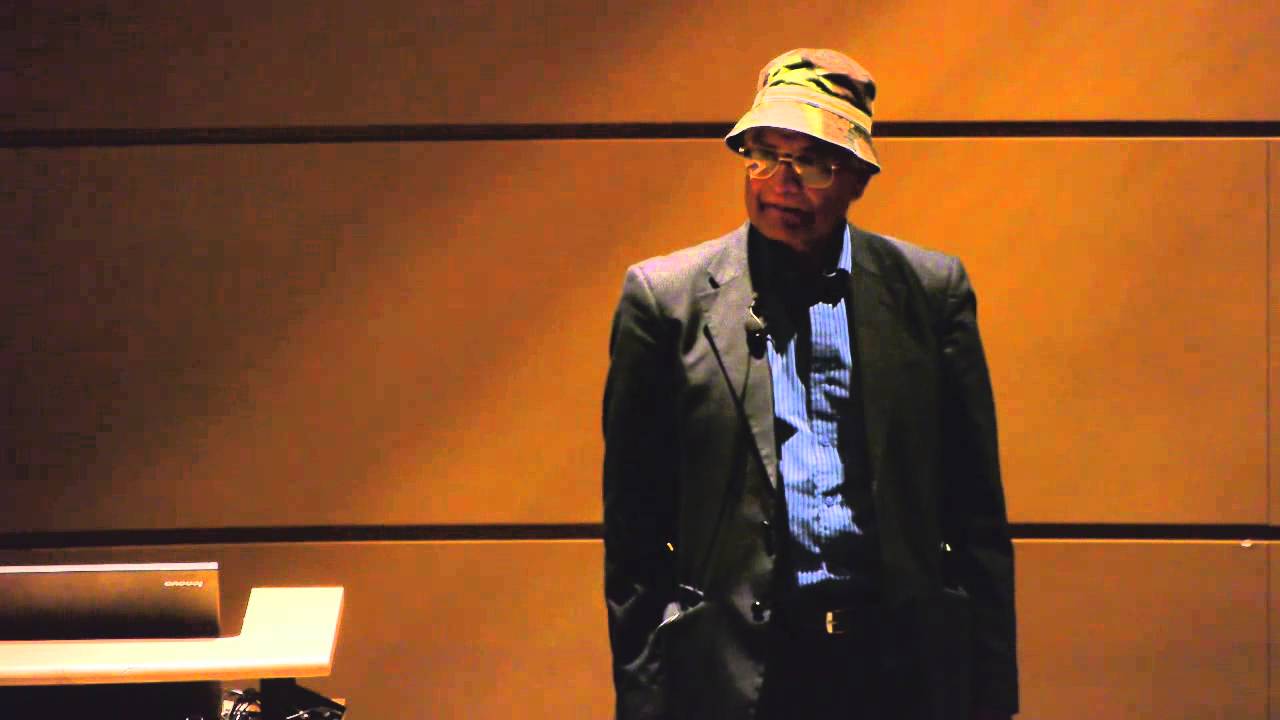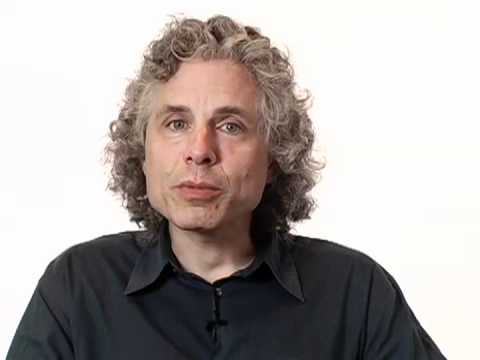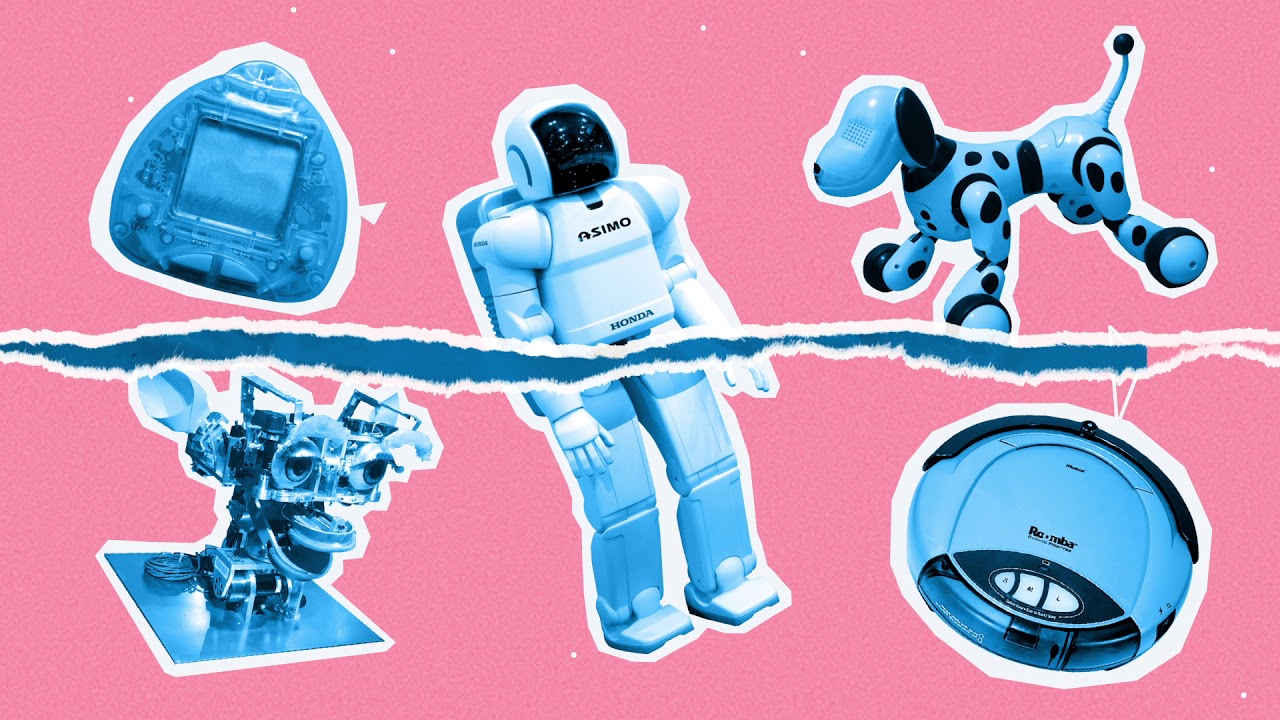Mormon Transhumanist Association
Amit Goswami is a professor of theoretical nuclear physics (retired) at the University of Oregon, where he served since 1968. He has proposed a new paradigm of science called “science within consciousness,” an idea explicated in his book, “The Self-Aware Universe.” Goswami has written several other popular books based on his research on quantum physics and consciousness.
Source
Amit Goswami on Quantum Physics, Consciousness and Health




Absolutely loving studying Amit’s work. So so powerful
I feel great about you. You made me richer by providing me 'a link' for grasping the two most wonderful worlds of ours- of actuality n possibilities. Joining your mission of quantum activisam…in larger interest of humanity.
hi everyone, please help…im a simultaneous interpreter and i have to interpret this talk next week and i CANNOT understand what he says at minute 32:00, ive played it back more than 20 times!!
complexity of brain is expressed in words and words point to more information.
Mehr zu diesem Phänomen des Bewussteins und der Quantenphysik und einem
Leben nach dem Tod auf der Setsantions-Doku: Jenseits des Greifbaren –
Engel, Geister und Dämonen
Hier der Link zum Film:
https://www.amazon.de/Jenseits-Greifbaren-Engel-Geister-D%C3%A4monen/dp/3945952999/ref=sr_1_1?s=dvd&ie=UTF8&qid=1478164794&sr=1-1&keywords=jenseits+des+greifbaren
I keep thinking "Communication without signals" (that we can presently detect), which somewhat undermines how seriously I take this theory. Certainly food for thought though.
Long bow logic.
An experiment has been published that disproves the consciousness interpretation of quantum physics: R. H. S. Carpenter and A. J. Anderson, "The death of Schrodinger's cat and of consciousness-based quantum wave-function collapse," Annales de la Foundation Louis de Broglie 31, 45-54 (2006). The idea of the experiment is that a Schrodinger-cat-like experiment is carried out, and two observers then each get partial information about the outcome. Later, they put the two pieces of partial information together, whereupon both observers become conscious of the experiment's outcome. The question then is, when did the collapse occur? Was it at the time of the experiment (when nobody was conscious of the outcome), or later (when Carpenter and Anderson became conscious of the outcome)? They did a series of trials of the experiment. In every trial, the collapse occurred at the time of the experiment. – Art Hobson, Professor Emeritus of Physics, U Arkansas, ahobson@uark.edu
▶ Amit Goswami on Quantum Physics, Consciousness and Health:
https://youtu.be/lqUge12FnI0 ~Pub Nov 26, 2013 via Mormon Transhumanist Association
++++
▶ Connect @Peta_de_Aztlan
++++
▶ Amit Goswami – Quantum Economics:
https://youtu.be/t4Y2q5RCAuQ ~Pub Aug 4, 2015 via LegaliseFreedom1
++++
Amit is selling his stuff and many people buy it. All they need is intellectual eargasm. Amit never demonstrated how he can manifest something from the non-local consciousness, however, he managed people to believe and buy whatever he pukes out. This is called ' argument from authority'. Even if he is a Quantum scienTWIST, many people think whatever he says is right, which is not correct. He does not deserve any credits as he is inept to demonstrate what he claims. The burden is on him to prove it that he can replicate his theory. If no one can understand Quantum physics ( Neil Bohr??) , then why on earth Amit tries to explain it. How can one explain or be specific about non-specific things or matters? Only specific things can be explicable.
It seems, anyone who possesses a 'status' will be largely honored and people ,mostly, forget to use their own logic. I yet to see his demonstration on his Quantum manifestation– peeps, he did nothing except his theoretical circular reasoning or unclear theorems. He is making money from YOU by selling his stuff. By the way, why does he want to sell something when he claims himself a ' quantum Master or pioneer' — Perhaps, he does not claim that much but he claimed a lot already by his theories,which he never accomplished practically. The gap between theory and practical is so big. All these charlatans including Greg Braden. Bruce Lipton or you name it run programs to make money but they claim they have the holy grail to manifest anything YOU want.
Amit at his best. Very understanding. He makes it so clear.
He is got a point: the standard classification of particles should also include strange quacks and bottom morons. Just now at the LHC they are frantically working to find the so called "GOSH!" particle. Shame Mother Therese passed away onto the multiverse, She could have been made Head of the Halo-gen Laser Research Department. She could have been working from the convent communication with the scientists the non-local way by pray only.
"The Quantum Universe: Everything that can happen does happen" by Brian Cox and Jeff Foresaw comes to mind after watching this lecture. According to Quantum Theory Amit Goswami and many more like him, do, unfortunately happen.
Consciousness, perception and thinking. A theory of mind according to platonic physics.
You will not find an explanation as understandable as this in the current Stanford Leibniz site,
which is incomplete as it makes no mention of Mind.
1. Plato's Mind (the One, the Self) is the cause agent, the singular cybernetic control point, of all perception,
thinking and doing in the universe, where control is top down from Mind.
2. Plato's Mind is timeless and spaceless, and being the only Reality, time and space
are not ultimately real, but are artificial constructions.
3. Since Mind is mental, not physical, all control and causation is mental, not physical,
and top down, since Mind is the singular (cybernetic) control point at the top.
4. Thus Mind plays the brain like a violin, not the reverse.
5. Man's mind (small m) is a passive mental subset, or monad, of Mind and under its control.
6. This monad (our mind) is the mental correspondent of the brain and controls it. Our mind
plays our brain like a violin.
7. Thinking is the intentional action of Mind (and thus mind) on mental entities such as ideas,
manipulating and transforming them intentionally (through will).
8. Qualia are simply sensory experiences, the conversion by Mind of sensory nerve signals into
mental sensory experiences in a fashion similar to the conversion of physical sensory nerve signals
into mental images.
9.. AQs Dennett has explained, In materialist thinking, there is no end to homunculi viewing the universe
through a chain of homunculi. Leibniz terminates this infinite regress by making the last viewer the Self ,
which is at a higher level and suitably equipped.
10. Perception occurs as Mind converts physical sensory signals in the brain into mental experiences in one's mind.
11. These experiences can be made conscious (are made aware) by reperceiving or thinking them.
This is called apperception by Leibniz. Thus consciousness is apperception.
12. The universe, according to Leibniz, is viewed directly by the One (the Self, the ONLY true perceiver),
which views these scenes discretely and in sequence (analogous to snapshots) at discrete points as a whole
indirectly through the totality of individual monads, and from their own perspectives.
13. This totality of sets of individual perceptions is then distributed in the proper order and perspective to
each of the monads in the universe.
14. These individual sets are called "perceptions", and must be distributied in this indirect fashion
by Mind because each monad, in order to remain an individual, has no "windows", to use Leibniz's term.
15. The perceptions are made up of what the monad would see of its nearby neighbors
if it were allowed to do so. This is purely mental, but allows us to speak in terms of
spacial distances and directions, through these snapshots, between physical bodies,
which Mind, being spaceless, cannot actually directly.
16. Mind is also timeless, so that time is physically "created" as an artifact through
the actual motions of physical bodies in physical spacetime.
15. Intelligence is the nonphysical ability to freely make autonomous choices. It is a faculty of
nonphysical Mind, the Nothing out of which the physical universe exploded in the Big Bang.
17. Another name for this nonphysical intelligence is "life." Leibniz maintained that the entire
universe is alive.
18. Each monad is perpetual, created at the beginning of the universe and only annihilated by Mind.
19. Since monads can contain other monads, they can. as plants do through seeds,
and humans do through sexual reproducxtion, produce subsequent generations.
20. A robot or computer has no Mind or Self which has the wide bandwidth, intelligence
and intentionality to actually perceive , think, or do things, such as Mind does.
So, being without Mind, computers can have no actual intelligence or life.
21. The current theory of mind is materialist. In contrast to the above, it uses the usual decapitated,
mindless, or where mind is at best an abstract entity, not a living presence as in the above.
The materialist model of perception, thinking and doing, being Mindless, is dead.
DSG
Dr. Roger B Clough NIST (retired, 2000).
See my Leibniz site: https://rclough@verizon.academia.edu/RogerClough
For personal messages use rclough@verizon.net
The three levels of reality in Platonic Physics
Roger B Clough, National Institute of Standards and Technology (Retired)
(11-28-2014)
Abstract
Here we combine the top-down metaphysics of Plato and Leibniz with the inside-out categories of C S Peirce to enable us to view the world in a new, more useful light, simultaneously from two perspectives, and in more detail than Leibniz's pre-established harmony. The top down structuring from Plato and Leibniz allows us to view the world as it is: governed cybernetically by thought from the top singularity (the One, comparable to a computer processing unit), rather than from the ungoverned perspective of current science. This allows us not only to understand the world properly, but to structure the world cybernetically. with all creation, perception and control coming in the form of thought from the top down, but inside out using C S Peirce's three categories.
1. Introduction. While C S Peirce is well known to the philosophy of science, the worlds of Plato and his follower Leibniz have been less explored for such purposes. Plato was an Idealisti and Arthur Eddington spent much of his life adapting Plato to science, but his use of Mind in a world thoroughly established in materialism ihas largely blocked exploration of the use of Mind cybernetically, as a singular, mental control point, so that the current world of science is only governed, if at all, in fiefdoms. But more significantly, materialism and a lack of a single cybernetic control from top down has hindered the develepment of an understanding to consciousness, thought and the role and nature of the self. For example, Dennett in his explanation of consciences does not have a perceiver (or at best a fancifal and abstract invention of one). Moreover the perceiver, to obviate the homunculus with homunculus problem, must be on a higher ontological level, and which has to be a living singular entity, not an abstract reference. By application of Leibniz and Plato and common sense as well,, we see that the perceiver must be singular– the One, the cybernetic Perceiver and control point, the central processing unit, to use a computer analogy.
The learning curve on Plato-Leibniz is a bit steep at first, foreign to most physical scientists because of their unfamiliar top down control, which is also done indirectly by thought rather than directly by physical interaction, but also because of Leibniz's unfamiliar spreadsheet style ontology, using not atoms but complete concepts called monads, which can be nested like sets. That would seem to render Leibniz more understandable to mathematicians and computer science, but his thinking in terms of substances and monads can be off-putting. Once these are understood (through his Monadology [ ]) and if one sticks to the elementary particles scale (the particles are both substance and monads) one can proceed fairly smoothly.
2. The three levels
Firstness
MindThe One, the Monarch- this is the realm of Plato's Mind. Purely subjective, timeless and spaceless – with innate knowledge and a priori memory, containing the pre-established harmony, necessary logic, numbers – the womb of the WHAT. Mind creates all, perceives all, controls all. Thus the individual mind controls the brain, not the reverse. Mind plays the brain like a violin.Secondness — Mental objects so both subjective +objective- The Many. In this, the WHAT separates from Mind and becomes a HERE. Accordingly. Heidegger referred to existence as "dasein". "Being here."
According to Leibniz, all monads are alive to various degrees. There are of three gradations of life in these, according to Leibniz:
a) Bare, naked monads, which we can think of as purely physical ( Eg, a fundamental particle).
b) Animal and vegetative monads, which Leibniz calls souls, which can have feelings, but little intellect.
c) Spirits (corresponding to humans), which have, in addition, intellectual capacities. Mind transforms physical signals in nerves and neurons into experiences. If Mind then reperceives or reflects on these experiences, they are said to be thoughgt or apperceived. To be apperceived is to be made conscious. Thus consciousness is the product of thought. Intentions are also made in the same way, so that we caqn say that thoughts are intentions by Mind.
The human brain is a monad which contains as subsets, mental capacities. Neuroscience tells us that there is binding between monads for parts and functions of the brain, but since monads cannot act directly on each other, this binding must be indirect, through the sequential updates of the perceptions and appetites of the subfunction monads. These must be made by Mind, either directly or through the preestablished harmony PEH). Unfortunately the Stanford Leibniz site on Leibniz makes no mention of the action of Mind on the individual mind, IMHO a gross shortcoming.
Sensory signals and signals for feelings must also go through such a binding process. In a sense, the binding process plays the role of a self, but in conventional neuroscience self is a function of the brain, rather than the other way round, as common sense suggests and the intentionality of self or mind proves, along with the need for a PEH.
This shortcoming in conventional understanding of the brain becomes all the more nagging if we consider thinking, which is closely related to apperception, because it must be conscious.Thinking, we submit, consists of consciously manipulating and comparing such apperceptions.
Through Mind, with its potentially infinite wisdom and intelligence, intuitions and thoughts can arise spontaneously in the individual mind. If these are to be immediate and/or original, it is reasonable to believe that they originate in Mind, rather than indirectly through separate although bound parts of the brain. Anyone who has experienced a vocal duet in which the vibratos are in phase should become convinced of this.
Mind is the monarch of the intelligent mind, which controls the brain. Mind plays the brain like a violin. Mind is also is able to focus on a thought for a brief period, within the context of one's memory and universal memory, for purposes of thinking an comparison, making the biological brain and its complex bindings seem hopelessly indirect and subject to confusion.
Thirdness – Corresponding physical objects as is appropriate- -here the object is born or emittted from the monad–and emerges into spacetime as a particle, becoming completely objective, a WHAT+ HERE +WHEN., In addition the Thirdness of a private thought or experience is its public expression in some appropriate form.
3. Conclusions
This format allows us to examine quantum phenomena from inside out and perception, thinking and consciousness ontologically- from physical nerve signals to mental experiences such as thought, consciousness, and cognition. It also avoids problem encountered in “bottom-up” science, such as complexity and emergence, if for no other reason than there is no apparent way of conceiving of a singular control point at the bottom.
—
Dr. Roger B Clough NIST (retired, 2000).
See my Leibniz site: https://rclough@verizon.academia.edu/RogerClough
For personal messages use rclough@verizon.net
Fannin has severely distorted brain science (yes, I'm published in many peer-reviewed journals). 90% of what he says makes no sense to any recognized neuroscientist. You can't measure "energy" thoughts don't leave the brain, research can't identify chakras, and the quantum physicists who were in "What the Bleep" sent a letter to Scientific American: the filmakers distorted everything the quantum physicists actually said. The connections between quantum dynamics, consciousness, and the brain have failed to find support in the scientific community, and each hypothesis is surrounded by volumes of evidence refuting it. As Sidney Segalowitz, Editor-in-Chief of Brain and Cognition, explained in a 2009 keynote issue:
The basic logic seems to be that since quantum physics produces notions that are impossible to reconcile with classical cause and effect, and [since] consciousness refuses to be reduced to the simplistic models of cognition…the two might have something to do with each other. This is hardly a leading beacon of scientific logic or method, but
does seem to capture the imagination of some theorists…We can dismiss the linkage because it is based on a hidden, and false, assumption.
The assumption, explains Segalowitz, is this: Do not try “to explain one set of inadequately defined processes in terms of another set of equally undefined processes.” It’s a fundamental philosophical error. The originators of quantum physics speculated on possible connections, and later theorists mistook these informal dialogues as scientific discoveries and hypotheses. And so profound misreading of history was made – a common occurrence in politics, religion, and science.
Welcome to reality
The basic principles of Platonic physics as of 9-10-2014
Roger Clough
1. All of the principles of Leibniz's Idealism, especially those of his Monadology, apply, in addition to the
principles stated here. If you do not completely understand the Monadology, you may misinterpret
what is said here.
2. The universe consists of two completely corresponding, entangled realms, the mental, which is alive, subjective and causative,
and the physical, which is dead, or essentially so, objective and passive.
3. The physical world is the world of spacetime and consists completely of bodies of matter (the physical)
so that space does not exist other than as perceptions in memory of the relative positions of all of the
other monads in the universe.
4. The mental world consists completely of Leibniz's monads as defined in his monadology,
except for the the highest or most dominant element, Plato's One or Mind, which has the universe as its monad..
5. The monads are quantum waves.
6.. All causation is mental and top-down and obeys Leibniz's pre-established harmony, which ensures
the best possible or least conflict among moving objects.otion .
7. Since the highest mental element is Plato's One or Mind. all causation and perception ,
directly and indirectly, is by the One.
8. The One is mental and timeless and contains, as part of its permanent memory, all of what Leibniz called necessary ;logic.
9. The physical correspondent of the mental is the world of spacetime and obeys the usual physical laws of
science including, to a certain exgtent, Newton's laws, and Einstein's laws of relativity.
10. The preestablished harmony has as its output the harmonic motions of objects in the everyday spacetime world of physics.
11. The physical world is the physical, spacetime world of science and experimentation, but is perceived by individuals as phenomenol,
meaning from only one point of view.
12. Since the physical world of spacetime is completely made of matter and force is not matter, force,
including the four principal forces, is a mental component of causation.
13. Thermodynamics, as well as all physical laws, are the mental rules of conduct of material bodies.
14. The universe is cybernetic, in which the One is the singular point of perception and control of the Many
physical bodies in the universe, just as a monarch controls his kingdom..
15. As such, there can and must be only one of the One.
16. Perception is the conversion of the physical, by the One through its monads, into experience and memory
by the One.
17. The physical world of spacetime and its physical objects, was made by the explosive creation of
physical objects from Plato's Mind into spacetime.
18. Life was also created at this time.
19. Intelligence is ability to freely make choices.
19. The One has the free will, within the constraints of the pre-established harmony,
and the intelligence and Mind, such that it is identical to Life.
20. Thus the universe exploded out of Life.
21. The basic characteristics of monads are given in Leibniz's Monadology. They are
sets, I surmise, in the mathematical sense of complete concepts, are alive, and are
nested to an infinitesimal degree. Much more is said of them in the Monadology.
If you do not completely understand the Monadology, you may misinterpret
what is said here.
22. Each human being is a complete concept and so is a monad containing other
monads, the principal one of which is the small m mind and its neurons.
24. The brain is a passive object completely controlled by Mind.
25. Each neuron is a monad.
26. Human perception occurs as input sensory nerve singles in the brain
are transformed by Mind into quanta of experience.
27 The awareness or apperception (to use Leibniz's term) of these experiences is called consciousness.
28. Since Mind is time-invariant, consciousness consists of changes in Mind, of a ordered
set of perceptions similar to the sequence of frames of a movie. But the brain
actually perceives such sequences as it would a movie.
—
Dr. Roger B Clough NIST (retired, 2000).
See my Leibniz site: https://rclough@verizon.academia.edu/RogerClough
For personal messages use rclough@verizon.net
This email is free from viruses and malware because avast! Antivirus protection is active.
__.,._
Posted by: Roger Clough <rclough@verizon.net>
Reply via web post
•
Reply to sender
•
Reply to group
•
Start a New Topic
•
Messages in this topic (1)
Visit Your Group
• Privacy • Unsubscribe • Terms of Use
.
__,.,_
blockage of the heart chakra isn't always just about love, like the organs the chakras work in tandem, and rely on each other , and so the blockage of the heart chakra is usually a blockage of the lower energy bodies
anyone wanna talk about organic food and consciousness
great video!!!!
Brilliant lecture, very thought provoking 🙂
Quantum Consciousness!